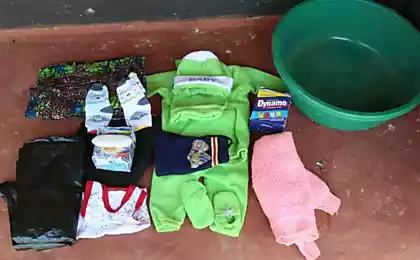483
A disposable diaper. What's inside?
Ninety nine million eighty two thousand four hundred seventy eight
Newborn diaper covers one third of the body. Perhaps, at least for this reason, there is reason to think that is in contact with the skin of the baby most of the day. Begin immediately with the good — what is bio-nappy: Waterproof top layer of diapers made from corn (maize) starch produced from grain grown in bio farms. Also, this layer contains cotton, which makes it pleasant to the touch. For example, a manufacturer of diapers Wiona offers to check the breathability of the diaper: the diaper is used or unused-filled with water lay it flat on a smooth surface. She lightly misted it means that the surface is really breathable. The inner filling of the diaper the large amounts of cellulose and absorbent in small quantities. The pulp production is wood from old-growth forests nevirapine. For pulp bleaching do not use chlorine chemicals. It is bleached with oxygen. All components of the diapers are dermatological control and are certified hypoallergenic. The packaging is made from organic bio-plastic (corn starch) or cardboard, which completely decomposes in the soil. Sami diapers and their packaging is completely biodegradable in soil within 2 years. Regular diaper to decompose, according to some estimates, from 200 to 500 years. In many sources you can find information that for the production of one diaper need 200 ml of oil. It contains dioxins (a byproduct of the bleaching of the diaper) and nice smelling perfumes. Basically, the diaper consists of a thin plastic film, the cuffs covered with polypropylene, and the inner absorbent layer contains a sodium polyacrylate (Sodium polyacrylate) – it was banned for use in tampons as the cause of toxic shock. In fairness, I must say that no research on how safe or not this substance if absorbed through the skin of the baby for a long time was not carried out. Everything else in conventional disposable diaper contains a substance tributyltin (tributyltin), in large quantities negatively affect hormones. There is also evidence that disposable diapers emit chemicals that can trigger an asthma attack. This is just a short list of simple components of the disposable diaper... Great if from regular diapers the baby does not occur allergies and diaper rash, but is it worth the risk by checking on your child the consequences of their use in the future? published
Source: www.bionicamarket.ru/blog/view/49
Newborn diaper covers one third of the body. Perhaps, at least for this reason, there is reason to think that is in contact with the skin of the baby most of the day. Begin immediately with the good — what is bio-nappy: Waterproof top layer of diapers made from corn (maize) starch produced from grain grown in bio farms. Also, this layer contains cotton, which makes it pleasant to the touch. For example, a manufacturer of diapers Wiona offers to check the breathability of the diaper: the diaper is used or unused-filled with water lay it flat on a smooth surface. She lightly misted it means that the surface is really breathable. The inner filling of the diaper the large amounts of cellulose and absorbent in small quantities. The pulp production is wood from old-growth forests nevirapine. For pulp bleaching do not use chlorine chemicals. It is bleached with oxygen. All components of the diapers are dermatological control and are certified hypoallergenic. The packaging is made from organic bio-plastic (corn starch) or cardboard, which completely decomposes in the soil. Sami diapers and their packaging is completely biodegradable in soil within 2 years. Regular diaper to decompose, according to some estimates, from 200 to 500 years. In many sources you can find information that for the production of one diaper need 200 ml of oil. It contains dioxins (a byproduct of the bleaching of the diaper) and nice smelling perfumes. Basically, the diaper consists of a thin plastic film, the cuffs covered with polypropylene, and the inner absorbent layer contains a sodium polyacrylate (Sodium polyacrylate) – it was banned for use in tampons as the cause of toxic shock. In fairness, I must say that no research on how safe or not this substance if absorbed through the skin of the baby for a long time was not carried out. Everything else in conventional disposable diaper contains a substance tributyltin (tributyltin), in large quantities negatively affect hormones. There is also evidence that disposable diapers emit chemicals that can trigger an asthma attack. This is just a short list of simple components of the disposable diaper... Great if from regular diapers the baby does not occur allergies and diaper rash, but is it worth the risk by checking on your child the consequences of their use in the future? published
Source: www.bionicamarket.ru/blog/view/49























